
7 minute read
FEATURE: The Lockdown Collection
21 DAYS. 21 ARTISTS. LASTING IMPACT.
A COLLABORATION OF ARTISTS SET OUT TO CAPTURE THIS PIVOTAL TIME IN HISTORY AND IN SO DOING USED THEIR WORK TO BENEFIT OTHERS.
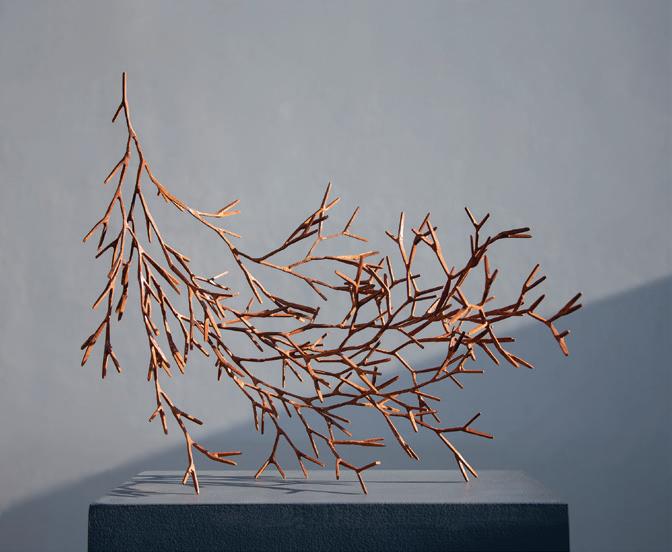
MARCO CIANFANELLI, Breath
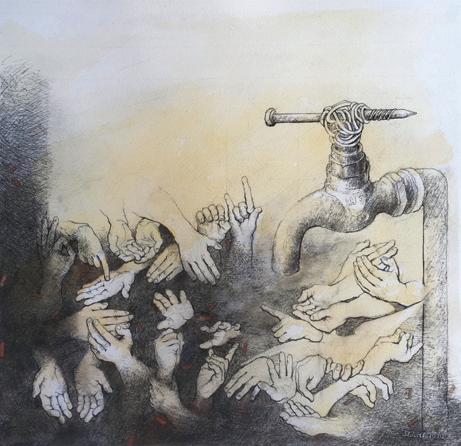
SUSAN WOOLF. The Future We Choose
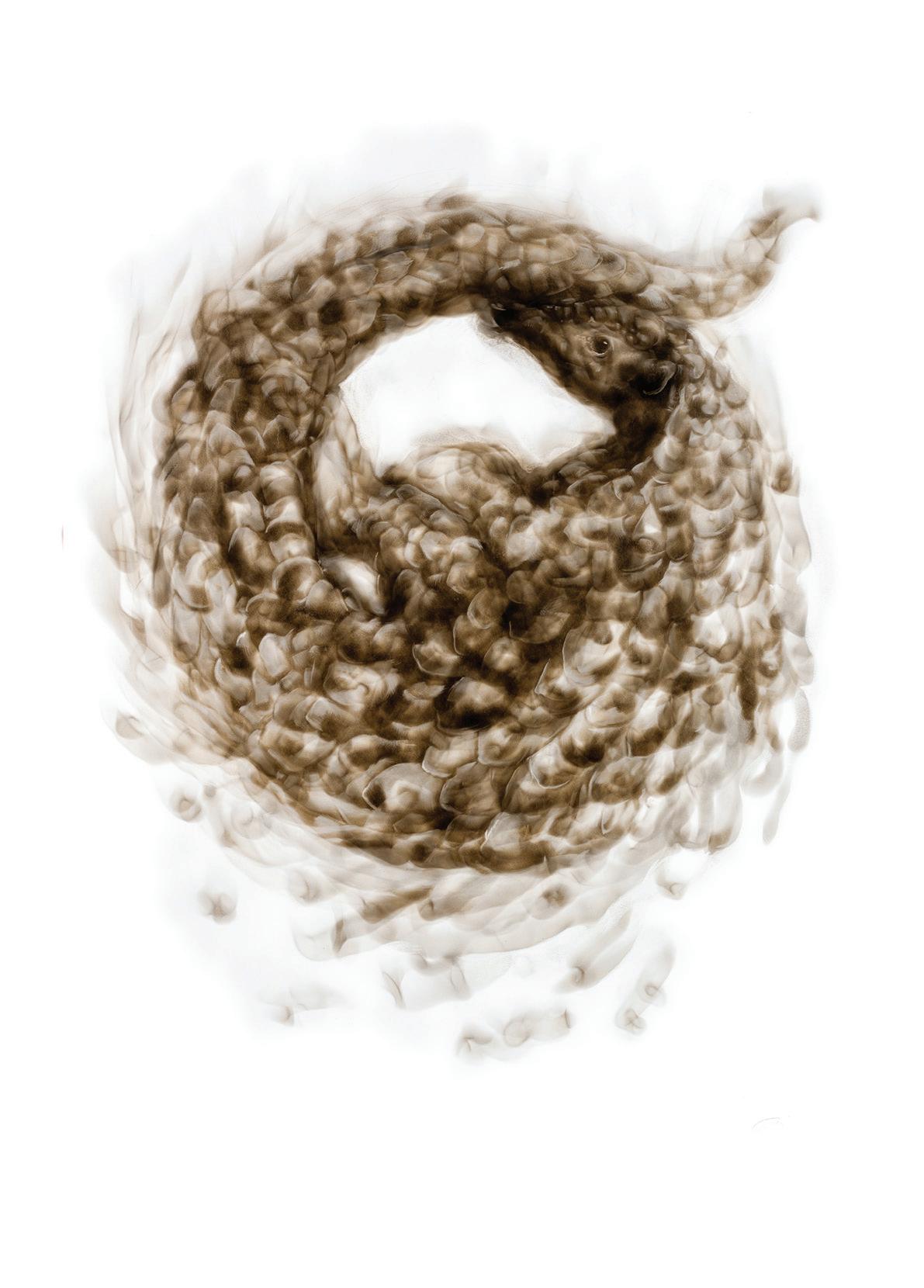
“Candle smoke is a fragile and volatile medium that I have employed over the past 15 or so years. The symbol of the Ouroboros, that of the snake or scaled dragon, biting its own tail, is an image found as early as 1200 BCE in China and has been absorbed and incorporated into the mythologies of many other cultures around the world. The pangolin, which rolls itself up into a defensive ball to look similar to the Ouroboros, is one of the world’s most heavily poached and trafficked animals. They have been linked to the outbreak of the interspecies viral pandemic of COVID-19, which started in Wuhan, China and is the reason for the current lockdown in our country. I feel that as a society obsessed with its own image and the consumption of its image, as well as in the consumption of the world’s natural resources at an alarming rate, we become our own Ouroboros and eat ourselves and all that surrounds us." – Diane Victor, Eating One's Own Tail - Pangolin
BY UFRIEDA HO
One day when COVID-19 is a memory and the trauma and loss that took so much from us is finally in softer focus, there will be a time to consider its impact and lessons learned.
Entrepreneur and businessman Carl Bates reflected on this as he cradled his one-year-old son, listening to President Cyril Ramaphosa’s speech announcing the imminent lockdown in late March this year. Bates, who was in South Africa at the time (he splits his time between New Zealand and South Africa), recognised the announcement signalled an important moment in history. He also knew the story of this period would have to be recorded for future generations. Though Bates is not connected to the art world he believed art would uniquely be able to capture the depth of human experience during a hard lockdown.
Bates contacted his Witsie friends in South Africa, marketer Lauren Woolf (BA 1992) and artist and art professor Kim Berman (BA FA 1982, PhD 2009). Together the trio shaped an idea of establishing a fund that would capture a record of the pandemic through art; be a sustainable support net for artists who would inevitably lose income due to lockdowns; and support artists wanting to make a positive contribution to ease the impact of the pandemic.
And so The Lockdown Collection (TLC) was born.
“It was concept to creation in 48 hours. We did everything through WhatsApp messages and voice notes and had to get everything in place between the time the lockdown was announced and when the lockdown came into effect,” says Woolf.
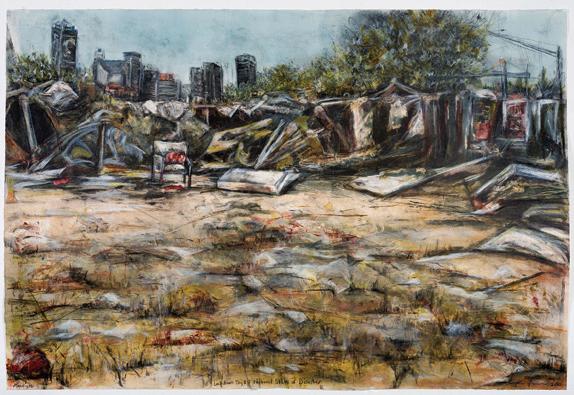
KIM BERMAN, State of Disaster
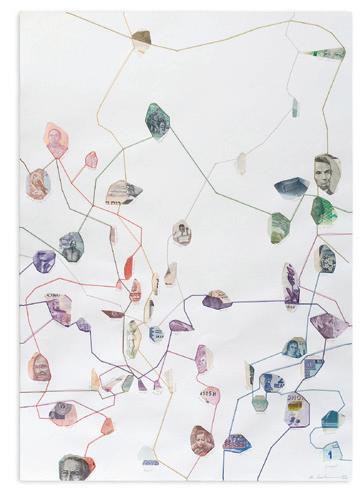
KIM LIEBERMAN, Pale Blue Dot: Pale Blue Dot (the title comes from the Carl Sagan book) below, Kim Lieberman mixes two mediums, thread and money, that she has worked with separately for years. They are both antique mediums; both use the human hand over and over. The Pale Blue Dot series comes under the artitst’s broader body of work called Territories. In these works, she uses paper currency as a device that is a mapping of sorts. The works refer to different kinds of territories – those that exist on maps (political, geographic, economic) as well as the internal territories of emotion, wisdom, and sense. Territories are a human construct, says Lieberman. They imply an edge, a space where you cross a border to get into another space. The money is also associated with geography but takes on a different format of references when the actual currencies of different countries are placed into a small space, into an artwork.
Source: The Lockdown Collection / www.thelockdowncollection.com

GERHARD MARX, Depths in Feet: In this work Depths in Feet, Gerhard Marx returns to the theme of visual distance and sets himself the task of exploring the possibilities of describing depths, volumes, and distances. The concept of distance becomes all the more relevant during this peculiar time of enforced social distancing. As Marx says: “This is a time of great uncertainty and vulnerability. It is a time in which the virtual flourishes to bring a sense of togetherness, desperate to breach ‘across’. But it is also a rare time where there is a sudden emphasis on the physical, and specifically on the value of spaces between, an emphasis on the special distribution (and the possibility thereof). It is a strange time where we look after each other, but not at each other. Where we paradoxically care for each other, not through intimacy, but through distance. In this time distance is a thick, tangible presence. It does not slip away, instead, distance is ‘kept’. Distance has perhaps never been so close.”
Source: The Lockdown Collection / www.thelockdowncollection.com
"We decided the collection would include the work of 21 artists for the 21 days of lockdown level 5. The artworks would go up for auction at the end of the 21 days with the money raised for each piece sold split between the featured artists, a TLC Vulnerable Visual Artists Fund and the national Solidarity Fund."
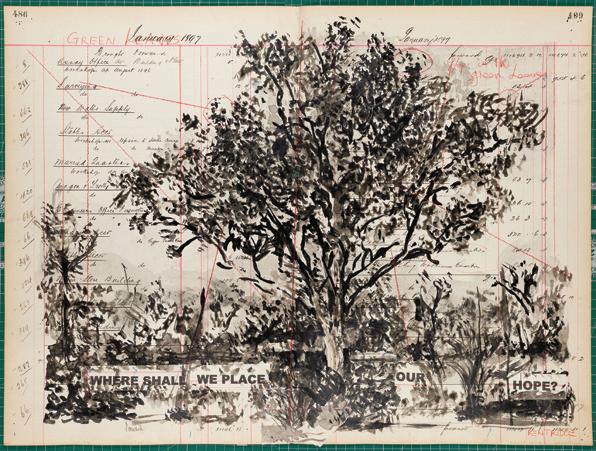
WILLIAM KENTRIDGE, Where Shall We Place Our Hope?
They made a kick-start when Berman approached one of South Africa’s most celebrated artists, William Kentridge (BA 1997, DLitt honoris causa 2004), for an artwork to sell. Kentridge was on board immediately. He donated his drawing "Where Shall We Place Our Hope?".
It became the “runway piece”. The drawing was snapped up and sold for R500 000, creating the seed money to get the ball rolling.
Other works featured over the 21 days of level 5 lockdown included many renowned Witsie artists: Diane Victor (BA FA 1987), Richard Penn (BA FA 1999, MA), Kim Lieberman (MA 2002), Gerhard Marx (MA 2004), Gordon Froud (BA FA 1987, PDip 1987) as well as Penny Siopis, Sam Nhlengethwa, Willem Boshoff, Lucas Nkgweng, Thenjiwe Nkosi and Bambo Sibiya.
All but three of the works were created specifically for the collection and all had some resonance to the impact, emotion and response to the pandemic. This included the frailties and fault lines the lockdown surfaced in an unequal society, but also the resilience and compassion of human beings. Each day of lockdown one of the artists and their work was profiled on the TLC social media platform. At the end of lockdown level 5 the pieces were auctioned off in a virtual auction. An astounding R2 million was raised.

RICHARD PENN, Manifold xiii

CARL BATES

LAUREN WOOLF
“We held an online Zoom auction with Aspire Art Auctions. It was a live auction and we also had a lot for closed bids. It was a first-ever auction of its kind and it worked amazingly,” says Woolf.
The success of the first auction prompted TLC to extend the collection with a new round of artists’ work called the Extension Collection. Wits alumni who participated in this include Penn, Marx, Marco Cianfanelli (BA 1993), Susan Woolf (PhD 2014), Michael Meyersfeld (BA 2018) and Paul Emmanuel (BA Fine Art 1994). Later also a TLC Student Collection focused on the work of emerging artists.

PAUL EMMANUEL, Platform Number 5
For artist Emmanuel lockdown came with the trauma of an abandoned exhibition that had been up at Wits Art Museum. “Men and Monuments had opened for two weeks when we went into lockdown and everything just shut down. It was very traumatic for me. I had no information and no idea of how it was all going to pan out,” he says.
For the collection Emmanuel contributed a hand-printed lithograph titled Platform Number 5. It’s a depiction of men moving through a turnstile at Park Station. Emmanuel says it represents an almost supernatural transition between the work being left behind before COVID-19 and the unknown of what lies ahead. (Emmanuel’s exhibition will continue at WAM once the museum reopens to the public.)
Grant applicants for the Vulnerable Artists Fund meanwhile were asked to share their personal stories, art and circumstances. Successful grant recipients have been asked to give back one work to the collection to be sold with the same pricing split.
One of these artists is Lebohang Motaung, who is an alumna of the Artist Proof Studio. Motaung says she applied for a grant and didn’t hesitate to contribute a piece towards the TLC Extended Collection in return.
“I just thought of what I went through and what others were going through.” Motaung’s piece And Yet I Smile (cover image) is a painting of a young woman wearing a transparent face mask. She says it represents the smiles of bravery against a world devastated by COVID-19, and the vulnerabilities that were unmasked. “Things have become a lot better and I really do believe that when we help each other we can get through this,” she says.
Sustainability is key for the TLC trio because the financial impact of COVID-19 on artists will continue for many months after the peak of the crisis is over.

KIM BERMAN
Images supplied by TLC
“We had hundreds of applications from across the country, from all walks of life. We had the aunty who sells her art at the Knysna market, through to middle-aged fathers and many young students starting out.
“We were floored by some of the stories of need. It was an exhausting process, but also a gratifying one,” says Berman. “It was also deeply humbling and rewarding to know that we could promptly channel much-needed money directly into the pockets of the people in need.”
The TLC initiative has received high praise around the world for its innovation and impact and for being able to centre art in the story of humanity facing one of its biggest disasters. But it’s the messages and letters they’ve received from individual artists that have mattered most. They include messages such as: “Receiving the R3000 from the Vulnerable Artist Fund helped a lot in this time – we managed to buy food, electricity, rent, gas (for winter is coming) and most importantly much needed art materials”; “April and May were hard for all artists staying home due to lockdown but through the help from VAF we managed to buy essential food and medicine for kids”; and “I was able to purchase four canvasses and already one work is complete and I’m busy with another, I shall attach the painting herein”.
“One of the great lessons to be learnt from The Lockdown Collection is that it has allowed people to see their own ability to make a plan – people can, they sometimes just need a boost in confidence,” Berman reflects.
“It’s confidence in knowing that even in lockdown isolation and a socially distanced world art’s significance isn’t diminished. It’s also a reminder that artists are a wide-ranging community and that when collaboration, creativity and commitment come together for greater good it can still win the day.”
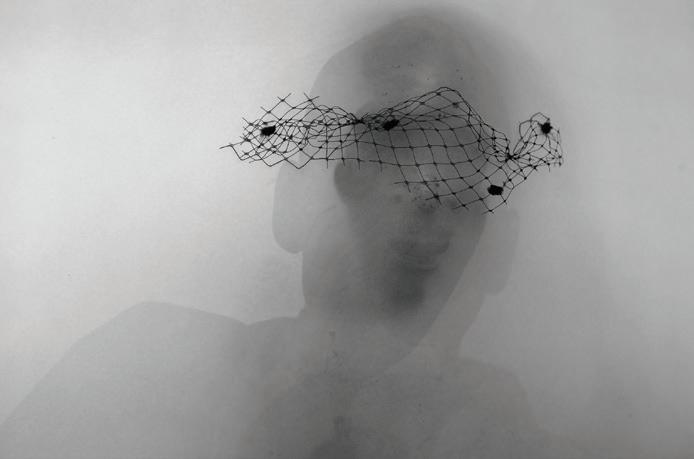
M I C H A E L MEYERSFELD, Veiled










